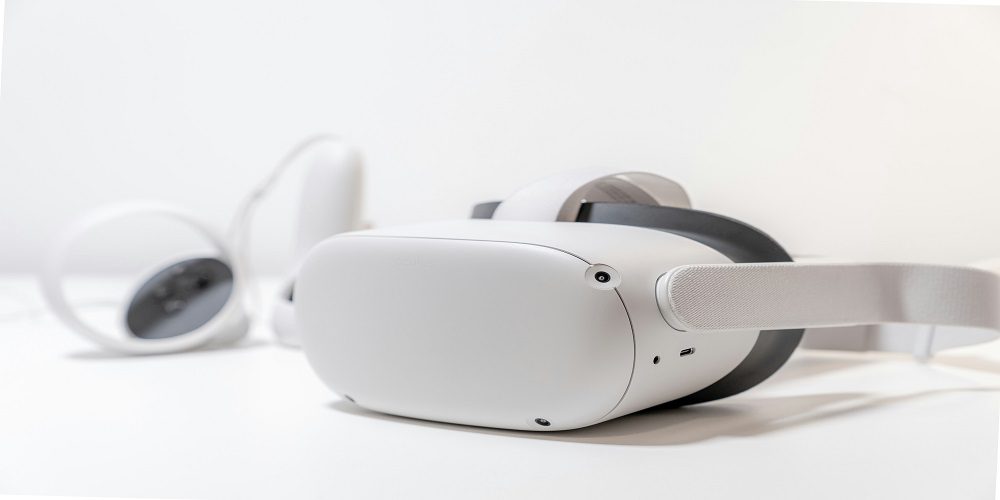Introduction
In the ever-evolving landscape of technology, virtual reality (VR) has emerged as a groundbreaking phenomenon, transforming the way we experience and interact with digital content. Central to this immersive experience are virtual reality headsets, devices that have captured the imagination of tech enthusiasts and casual users alike. In this comprehensive guide, we will delve into the intricate workings of VR headsets, exploring the technologies that power them and the myriad ways they go beyond conventional boundaries.
The Foundation of Virtual Reality:
To comprehend how VR headsets operate, it’s essential to grasp the foundational principles of virtual reality. At its core, VR seeks to create a simulated environment that mirrors the real world or transports users to fantastical realms. The key components contributing to this illusion include:
Sensors and Tracking Technology: VR headsets are equipped with an array of sensors, such as accelerometers and gyroscopes, which track the user’s head movements in real-time. This tracking technology ensures that the virtual environment responds seamlessly to the user’s actions, enhancing the sense of immersion.
Display Technology: The quality of the visual experience in VR is heavily dependent on the display technology employed. High-resolution screens with low latency are crucial for minimizing motion sickness and providing a lifelike visual experience.
Audio Systems: Immersive soundscapes are a pivotal aspect of VR. Headsets often come with integrated audio systems or support for external headphones to create a 3D audio environment, further enhancing the sense of presence.
Types of VR Headsets:
VR headsets come in various forms, catering to different user preferences and use cases. The two primary categories are:
1. Tethered VR Headsets: These headsets are connected to a powerful computing device, typically a PC or gaming console, via cables. Tethered headsets offer high-end graphics and extensive content libraries, making them ideal for gaming and professional applications.
2. Standalone VR Headsets: These headsets operate independently, eliminating the need for external connections. Standalone VR devices incorporate all the necessary components, including processors and batteries, within the headset itself. They are more portable and accessible, making them suitable for a broader range of users.
The Inner Workings of VR Headsets:
A. Optics and Lenses:
VR headsets utilize advanced optics and lenses to create a convincing 3D visual experience. These lenses are designed to focus on the images displayed on the screen, minimizing distortion and maximizing clarity.
B. Motion Tracking:
Motion tracking is a fundamental aspect of VR immersion. Infrared sensors, cameras, or a combination of both are employed to track the user’s movements accurately. This real-time tracking ensures that the virtual environment aligns seamlessly with the user’s actions.
C. Latency and Refresh Rates:
Achieving low latency is crucial for preventing motion sickness in VR. The time it takes for a user’s movement to be reflected in the virtual world, known as motion-to-photon latency, must be minimized. Similarly, higher refresh rates contribute to smoother visuals, reducing discomfort during prolonged use.
D. Field of View (FoV):
The FoV represents the extent of the virtual environment visible to the user at any given moment. Wider FoV values contribute to a more immersive experience by expanding the user’s peripheral vision.
The Role of Sensors in VR:
A. Inertial Measurement Units (IMUs):
IMUs, comprising accelerometers and gyroscopes, play a pivotal role in tracking the user’s head movements. Accelerometers measure linear acceleration, while gyroscopes detect rotational movements, collectively providing the data needed for accurate motion tracking.
B. External Sensors and Cameras:
Some VR systems incorporate external sensors or cameras placed in the user’s environment. These external components enhance tracking precision, especially in tethered VR setups.
C. Inside-Out Tracking:
In contrast, inside-out tracking relies on sensors embedded in the VR headset itself to monitor the surrounding environment. This approach eliminates the need for external sensors and enhances the headset’s portability.
The Evolution of Virtual Reality:
A. Advancements in Display Technology:
Over the years, VR headset manufacturers have continually pushed the boundaries of display technology. High-resolution OLED and LCD screens with fast refresh rates have become standard, elevating the visual fidelity of VR experiences.
B. Wireless VR:
The quest for greater freedom of movement has fueled the development of wireless VR solutions. Wireless VR headsets use technologies like Wi-Fi or dedicated wireless protocols to transmit data between the headset and the computing device, eliminating the constraints of cables.
C. Hand Tracking and Haptic Feedback:
Beyond head and body movements, modern VR systems increasingly incorporate hand tracking and haptic feedback. This allows users to interact with the virtual environment using natural hand gestures, adding a new layer of realism to the experience.
Overcoming Challenges in VR:
A. Motion Sickness:
Motion sickness remains a challenge in VR, but advancements in motion tracking, low-latency displays, and improved design have significantly mitigated these issues. Developers also implement comfort settings, such as teleportation-based movement, to minimize discomfort.
B. Accessibility and Inclusivity:
Making VR accessible to a broader audience is an ongoing goal. Efforts to reduce costs, improve ease of use, and address concerns related to motion sickness contribute to making VR more inclusive.
Applications Beyond Entertainment:
While VR is often associated with gaming, its applications extend far beyond the realm of entertainment. Industries such as:
1. Healthcare: VR is used for medical training, therapy, and pain management.
2. Education: Virtual classrooms and immersive learning experiences are becoming increasingly prevalent.
3. Real Estate: Virtual property tours provide a realistic sense of space to potential buyers.
4. Corporate Training: VR facilitates realistic simulations for training purposes.
The Future of Virtual Reality:
As technology continues to evolve, the future of VR holds exciting possibilities. Anticipated developments include:
Enhanced Graphics and Realism: Continued advancements in hardware will lead to even more realistic graphics and immersive experiences.
Expanded Content Libraries: A growing ecosystem of VR content across various genres and industries
Social VR: Platforms that enable social interactions in virtual spaces are poised to become more sophisticated, fostering a sense of presence and connection.
Conclusion
The magic of virtual reality headsets lies in the seamless integration of cutting-edge technologies. From motion tracking and optics to immersive audio and evolving display technologies, VR headsets continually push the boundaries of what’s possible. As we celebrate the one-year milestone of this article, the future of VR looks incredibly promising, with the potential to revolutionize how we work, learn, and play. The journey into virtual realms has just begun, and the adventure promises to be nothing short of extraordinary.



































